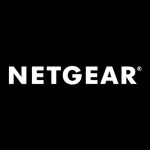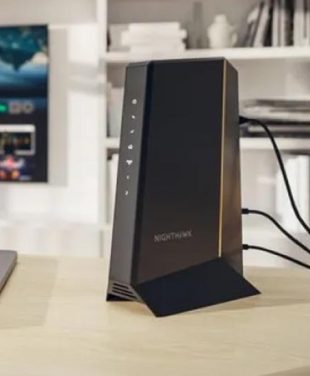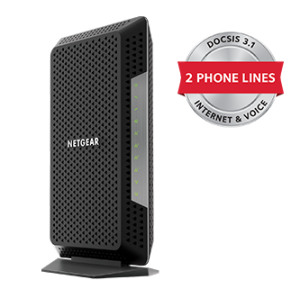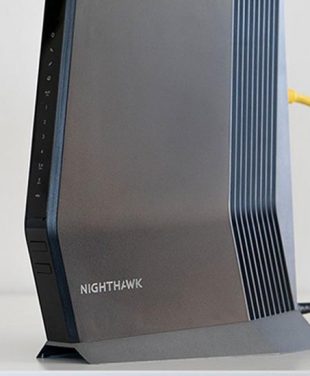Hello Internet! In this article we discuss Cable Modems, WiFi Routers, Cable Gateways, and how to quickly and effectively setup your home network.
What is a Modem?
Modems connect your home or business to the internet’s wide area network. A modem converts the internet service provider signal coming through Coaxial Cables into a usable Ethernet network connection for your home. To simplify the setup most ISPs will rent users a Cable Modem with WiFi – called a Cable Gateway with their service.
Modems use a technology called “DOCSIS” short for “Data Over Cable Service Interface Specification”. DOCSIS 3.1 is the most common version of Cable Modem technology, with DOCSIS 4.0 planned as the upcoming version promising faster upload and download speeds.
Gateway Vs. Modem – What’s the Difference?
Modem:
A standalone modem converts a signal from your ISP (And the rest of the internet) into a local IP address on a single LAN Ethernet port. This single port can connect one device to the internet. In order to share this internet connection with other devices in the household it must be connected to a WiFi Router’s WAN port. The WiFi router can now connect all of your devices to the Internet.
Standalone Cable Modem + WiFi Router Considerations:
- Upgrade your Modem and WiFi devices separately.
- Get the Best possible Cable Modem capabilities.
- Get the best possible WiFi capabilities.
- Slightly more difficult to set up.
- More equipment, wires and power draw (Comparable a light bulb per each device).
Cable Gateway:
Also known as a Two-in-One Modem, Modem Router or a Modem Combo. A gateway modem is a hybrid device that combines the capabilities of a Modem and the capabilities of a WiFi router in a single device. This is a very common device in households with Cable Internet ISP. Gateways can be linked with a standalone WiFi Router or Mesh system, but it’s generally recommended to disabled the built in WiFi capabilities to reduce interference.
Gateway Considerations:
- Easy set up – likely by your ISP engineer along with your service.
- Fewer devices, cables, and power draw.
- More difficult to upgrade, “locked-in” to the capabilities of its included WiFi Router.
- Expect to pay $10 – $25 / Month fees if renting from your ISP.
- Cable Gateways are available from manufacturers – avoiding rental fees.
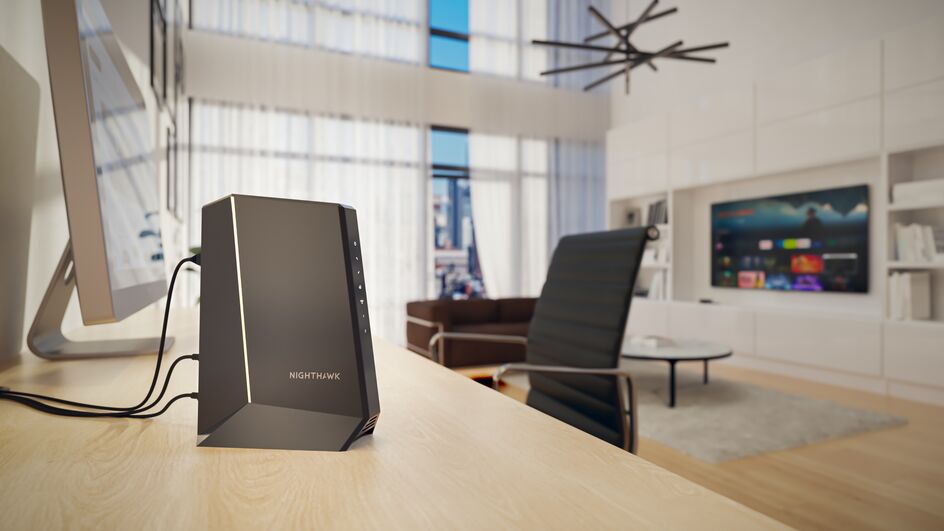
Save On Rental Fees when you BYO Modem
A great option to save money is by buying your own modem, such as a NETGEAR Nighthawk DOCSIS 3.1 Cable Modem (CM3000) or DOCSIS 3.1 Cable Modem (CM2500). They offer faster speeds, improved device compatibility, and zero rental fees for long-term savings.
What is a Router?
The router receives the internet signal from your modem in a form that can be distributed to your connected devices via WiFi or Ethernet ports. The latest WiFi 7 technology offers blazing-fast multi-gigabit wireless router internet speeds, so it’s beneficial to own a NETGEAR Nighthawk WiFi 7 Router or NETGEAR Orbi WiFi 7 Mesh System to ensure better performance, coverage, and speed compared to older ISP routers. For more details on routers see our What is a Router blog.
Step-by-Step Guide: How to Connect a Modem with a Router
It takes only a few minutes to connect a modem with a router to have internet up and running. You can also use a modem/router combo. Set up near an electrical outlet to plug in the router’s power cord and modem’s power cord.
1. Turn off your modem and router.
2. Connect the modem to the cable outlet using a coaxial cable.
3. Using an Ethernet cable, connect the modem to the WAN port of the router (usually labeled “Internet”).
4. Plug in the modem and wait for all the lights to stabilize.
5. Power on the router and wait for the router’s lights to show it’s connected to the modem.
6. Connect your devices to the router’s WiFi network or via Ethernet cable.
7. Activate your Modem with your internet service provider (ISP). Modems need to be “Activated” by your ISP and won’t start until this step takes place. ISP’s handle this step different ways, including activating via a phone app, or by calling customer service and providing the new device code.
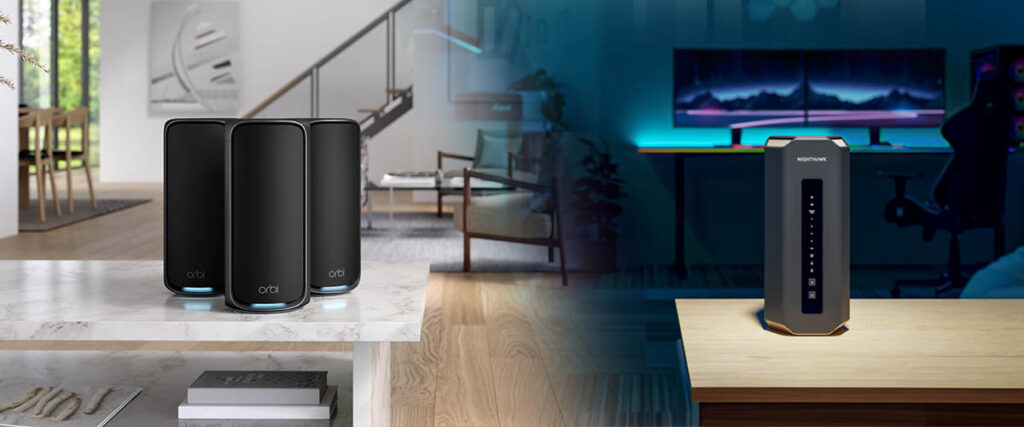
Router Technology - Mesh WiFi vs Traditional Router
So if you’ve decided to upgrade to a standalone Cable Modem you might be asking yourself “what is your best Router pair with my modem?”. Your to major options are WiFi Routers and Mesh WiFi Systems.
A standard Router provides WiFi from one central location for concentrated performance that’s ideal for simpler layouts and smaller spaces. An Mesh System broadcasts WiFi from multiple points, spread throughout the home, for consistent performance in larger spaces.
Troubleshooting Common Modem Issues
Issue 1: No Internet Connection
Solution: Ensure all modem-router cables and adapters are securely connected, and the modem’s internet light is on. Restart the modem and router. If the Modem has never been activated, contact your ISP to activate the modem.
Issue 2: Buffering and Slow WiFi Speeds
Solution: Check for any interference, and ensure the router is placed in a central location. Ensure the latest firmware is downloaded. Consider upgrading to a router like the Nighthawk or Orbi for better coverage to your IP address. Is your ISP plan too slow?
Issue 3: Can’t Connect Devices to the WiFi Network
Solution: Double-check your WiFi password, and ensure your devices are within the router’s range. Consider a router or modem reboot.
For more support with your Cable Modem visit the NETGEAR Support pages.
Why Choose a NETGEAR Cable Modem?
NETGEAR has been leading every WiFi technology breakthrough since WiFi was first introduced commercially in the 1990s. Our WiFi routers continue to reach new performance levels, including the best NETGEAR WiFi 7 Nighthawk Routers and Orbi Mesh Systems. NETGEAR Cable Modems synchronize perfectly with NETGEAR routers, so you are assured of the fastest available wireless speeds of today and tomorrow. Save money on monthly rental fees and transform your home network with the wonders of NETGEAR WiFi 7.

